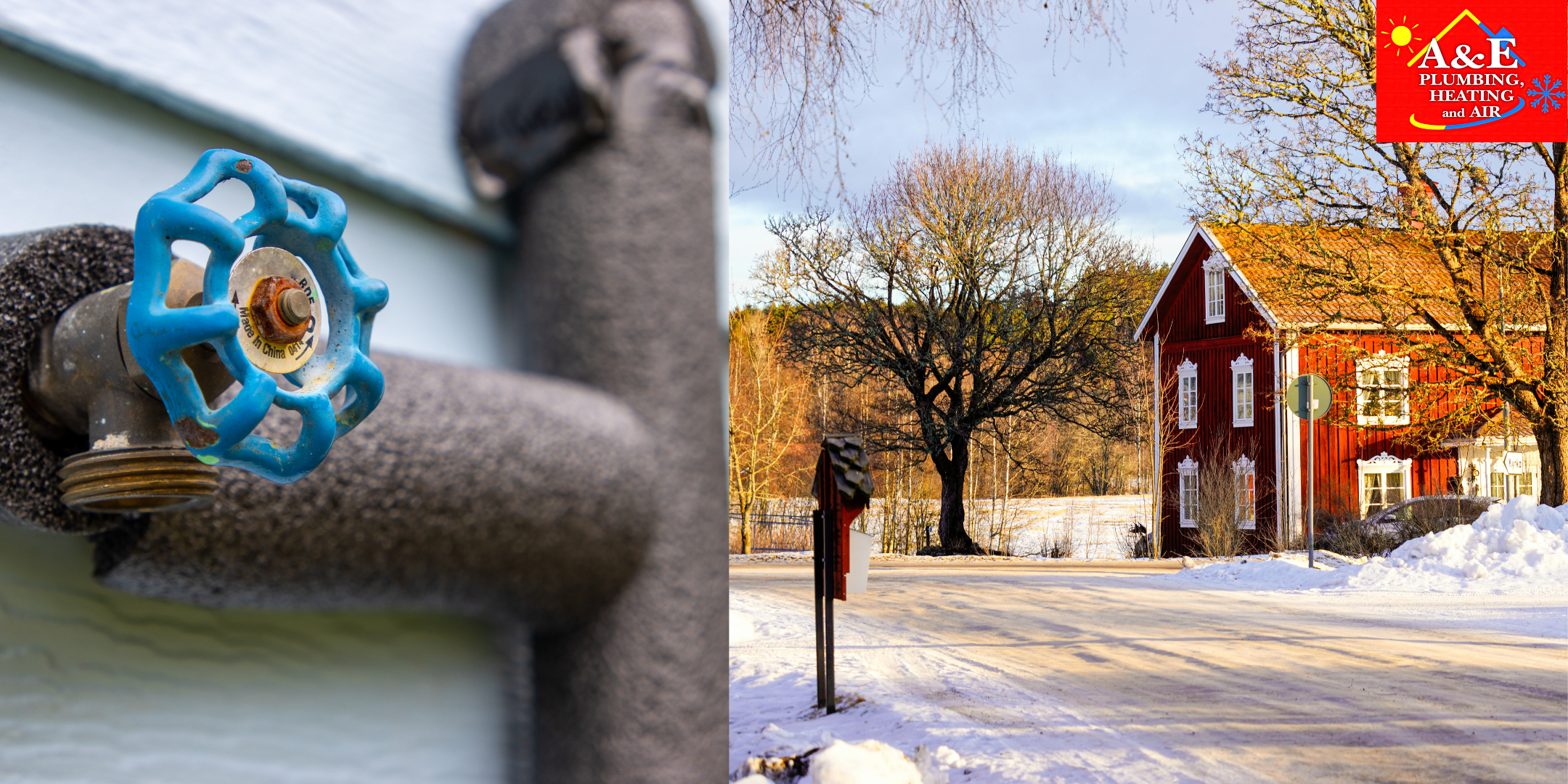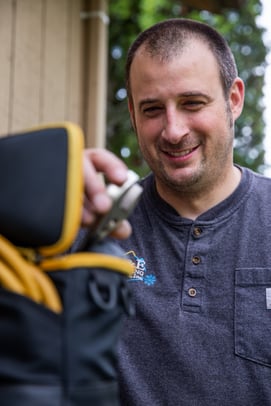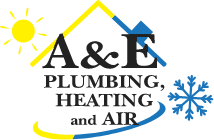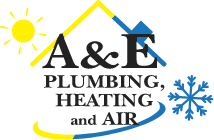
Cold snaps hit hard across Oregon and Washington — one night it’s chilly, the next you’re waking up to a sink that sounds like it’s gargling ice cubes. Every winter, homeowners from Gresham to The Dalles start asking the same question: Do I really need to call a plumber, or can I winterize my house myself?
sink that sounds like it’s gargling ice cubes. Every winter, homeowners from Gresham to The Dalles start asking the same question: Do I really need to call a plumber, or can I winterize my house myself?
By the end of this article, you’ll know exactly which plumbing tasks you can confidently tackle yourself and which are better left to a licensed technician. With over 17 years of experience serving homes throughout the Columbia River Gorge, Portland Metro, and beyond, A&E Plumbing, Heating and Air has seen every version of “I tried to DIY this” imaginable.
Understanding Winter Plumbing Risks
Every winter, our phones start ringing with the same problem: frozen pipes that cracked when temperatures dropped overnight. It’s not neglect — it’s usually misunderstanding.
Water expands when it freezes, and that expansion builds pressure inside your pipes. When the pressure has nowhere to go, the pipe bursts. The damage doesn’t show up right away, either — it happens once things start to thaw and water begins to flow again.
If you own a home in The Dalles, Hood River, or Troutdale, you know how quickly Gorge temperatures can swing from mild to freezing. That’s why winterizing isn’t optional here — it’s essential. The trick is knowing what you can safely do yourself and where professional expertise matters most.
What You Can Confidently Handle Yourself
Even without plumbing experience, there are several simple, low-risk steps that make a huge difference. These are easy wins that don’t require tools, training, or getting into tight crawl spaces.
1. Disconnect and Drain Outdoor Hoses
When temperatures drop, any water left inside a hose will freeze and expand — and that pressure can back up into your outdoor faucet.
- Remove every hose, even “frost-proof” ones.
- Tip the ends down to drain leftover water.
- Store them indoors or in a shed where they’ll stay dry.
If you’ve got decorative hose reels or splitters attached, remove those too. They hold hidden pockets of water that love to freeze first.
2. Add Basic Pipe Insulation
If you can access the pipes, you can insulate them. Foam pipe sleeves, tape, or even old towels can help retain heat and prevent freezing in exposed areas.
retain heat and prevent freezing in exposed areas.
- Focus on unheated garages, crawl spaces, and basement ceilings.
- Check under kitchen and bathroom sinks, especially those along outside walls.
Insulation doesn’t make your plumbing invincible, but it buys you valuable time during a sudden temperature drop — which, around the Columbia River Gorge, happens often.
3. Adjust Thermostats and Close Drafts
Lowering the heat too much can backfire. When interior temps drop below 50°F, pipes inside walls and floors can freeze.
- Keep the thermostat set to at least 55°F, even if you’re traveling.
- Open cabinet doors under sinks so warm air can circulate.
- Close crawl space vents and fix weatherstripping where cold air leaks in.
Many homeowners hesitate here, thinking a few degrees will save money on energy. In reality, a burst pipe repair costs hundreds while heating costs just a few dollars a day.
When It’s Time to Call the Pros
Some winterization steps look simple in tutorials but require the right tools, safety knowledge, and experience to do correctly. This is where a professional plumbing team like A&E Plumbing, Heating and Air steps in — not because you can’t, but because the risk outweighs the reward.
1. Air Compressor Blowouts
Even after you drain your lines, water remains trapped in low spots or bends. Professionals use regulated
air compressors to gently blow water out of the system. It’s precise work — too much air pressure can crack fittings or damage valves.
This service is essential for second homes, vacation properties, and rural homes around Hood River and The Dalles that sit empty for days or weeks during the coldest months.
2. Water Heater Draining and Prep
Draining a water heater sounds simple — open a valve, let it flow — but there’s more to it. The water inside can be scalding, and turning off power or gas incorrectly can damage the unit or void the warranty.
Our technicians:
- Safely power down and drain the tank
- Flush out sediment buildup
- Confirm all valves are sealed and ready for cold weather
This step extends your water heater’s lifespan and prevents costly replacements later.
3. Crawl Space and Hidden Valve Shut-Offs
Older homes across Gresham and the Portland Metro often hide plumbing in crawl spaces or behind panels. Many homeowners don’t realize shut-off valves are tucked away there — until they freeze.
Professional plumbers know where to find them and how to isolate those vulnerable lines. It’s dirty work, but it can mean the difference between a warm, dry home and a flooded one come spring.
4. Plumbing System Pressure Testing
Before winter truly sets in, our team at A&E performs a pressure test to ensure your system is fully sealed and safe. This detects tiny leaks you’d never notice otherwise — leaks that become major issues under freezing conditions.
It’s the kind of check most homeowners simply don’t have the equipment for, but it provides incredible peace of mind when you’re heading out of town or hunkering down for the season.
DIY vs Professional Plumbing Winterization: Quick Reference Guide
| Task | Who Should Do It | Description | Average Time | Typical Cost (Oregon/Washington) | Risk Level |
| Disconnect & Drain Outdoor Hoses | DIY | Remove hoses from outdoor faucets and drain completely to prevent freeze pressure. | 10–15 min | Free | Low |
| Add Basic Pipe Insulation | DIY | Slip foam sleeves or wrap towels around exposed pipes in crawl spaces, garages, or under sinks. | 30–60 min | $20–$50+ | Low |
| Adjust Thermostat & Seal Drafts | DIY | Keep thermostat above 55°F, open cabinets, and close crawl-space vents to retain heat. | 15–30 min | Free–$30+ | Low |
| Air Compressor Blowout of Water Lines | Pro | Clears remaining water in plumbing with regulated air pressure — prevents internal freeze bursts. | 1–2 hrs | $150–$300+ | Medium–High |
| Water Heater Draining & Prep | Pro | Safely powers down, drains, and flushes water heater; resets gas/electric systems. | 1 hr | $125–$250+ | Medium |
| Crawl Space & Hidden Valve Shut-Offs | Pro | Locates and closes interior shut-off valves; inspects low-line drainage and insulation. | 1–2 hrs | $150–$400+ | High |
| Plumbing System Pressure Test | Pro | Checks for hidden leaks and system integrity before freezing temps hit. | 1 hr | $100–$200+ | Medium |
| Smart Leak Detection Sensor Setup | Pro or DIY Hybrid | Installs Wi-Fi sensors near sinks, heaters, and crawl spaces for early alerts. | 30–60 min | $80–$200+ per sensor | Low |
| Thermostat Upgrade (Smart Control) | Pro | Adds smart thermostats for temperature automation while away. | 1 hr | $200–$400+ installed | Low |
Addressing Common Hesitations
It’s completely normal to wonder, “Do I really need professional help for this?” or “Can’t I just follow a tutorial?”
Here’s the honest answer:
If it’s visible and accessible, you can probably do it.
If it’s sealed, hidden, or pressurized, leave it to a licensed plumber.
Professional winterization isn’t just a luxury — it’s an insurance policy for your home. For properties around The Dalles, Hood River, and Troutdale, where winter winds are intense and temperatures drop fast, that protection is worth it.
The Smartest Approach: Combine DIY and Pro Support
The best homeowners — the ones who rarely deal with burst pipes or water damage — take a hybrid approach.
They do the easy, effective DIY tasks first: hoses, insulation, thermostat adjustments. Then they schedule a professional service to handle the more technical work. It’s efficient, affordable, and most importantly, reliable.
This way, you’re not paying for tasks you can handle, and you’re not risking expensive mistakes on the ones you can’t.
Your Next Step: A Full Professional Plumbing Winterization Checklist
You probably started reading this wondering how much winter plumbing prep you could really do on your
own — maybe even feeling torn between saving money and avoiding costly mistakes.
With years of cold-season experience behind every plumber and homeowner tip you’ve just read, you can move forward feeling capable, informed, and ready to protect what matters most. The next step is simple: explore A&E's Plumber-Approved Winterization Checklist for Second Homes to see every step professionals take when temperatures drop and use it as your personal roadmap for a worry-free winter.
It walks you through everything our licensed technicians inspect, clean, and secure to protect homes across Oregon and Washington. Whether you’re prepping a full-time residence or a seasonal getaway, it’s the ultimate guide for staying warm, dry, and stress-free all winter long
Daphne Hunt holds a bachelor's degree in English and Mass Communication and has a lifelong passion for writing. She thrives on using her skills to craft compelling pieces that inform, inspire, and connect with readers.
Topics:



